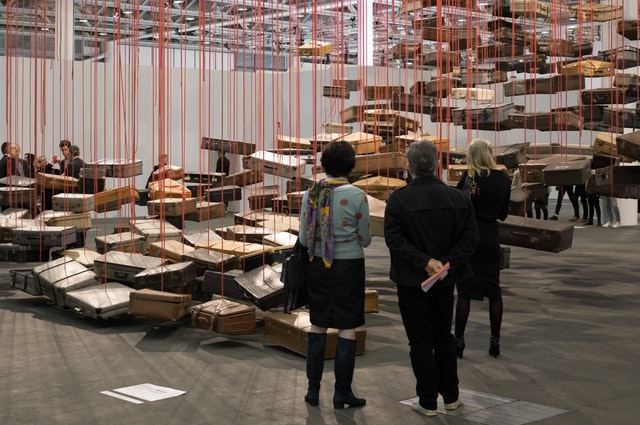Self-described as “Australia’s top future-oriented museum”, University of South Australia’s MOD is a brand-new establishment within the museum industry. The museum brings together science, art and engineering in a selection of displays developed to mostly involve young adults aged from 15 to 25.
The strategy of the MOD shows us how crowds connect with civilisation in the 21st century, with the name MOD standing for museum of discovery.
Discovered in research
The vision and concept behind the purpose-built MOD setup is daring and contains six gallery exhibits and a couple of studio areas over two floors. There is also a permanent interactive screen that visualises planetary data: A National Oceanic and Atmospheric Administration (NOAA).
The displays set to be featured will likely reveal the blurring of cultural experiences with recent improvements in science and technologies, such as robotics and artificial intelligence.
Many current museum directors, and museum’s property management believe in the idea of a curation-based version, which for MOD is concentrated on easing interactive and immersive adventures which draw upon a solid basis of study.
One of the displays set to be featured, Feeling Human, reflects this strategy. An immersive, multi-sensorydisplay that communicates research by the University of South Australia will allow the museum’s visitors to see how their senses of pain may impact upon their degree of distress and of discomfort.

Museums are shifting their focus
In the current age, museums are not any longer simply just spaces that accommodate airtight cabinets of interesting objects. A newly developing trend that has taken off in the gallery and museum industry is the integration to the screen displays of new methodologies and approaches developed to boost visitor participation and engagement.
This is particularly significant in a time when museums will need to discover new approaches to keep value, income and their public profile and increased or maintained property valuation to an extent.
Cultural establishments are facing the future in fresh ways and fixing the challenge of maintaining legacy, while preserving significance and developing presence with their décor and design.
It’s now widely accepted that cultural establishments must integrate interaction and involvement in their displays and in a manner that appeals to technology-savvy generation of visitors.
This article identifies how technology drives improvement and innovations in museum displays.
The Development of Technology
It’s possibly unsurprising that museums and galleries have increased in accord with the growth of display technologies. All these have played an integral role in changing the relationship between works of art and the crowd viewing them.
Originating as privately-owned collections of the rich nobility, it wasn’t till the 18th century when museums started to be considered as a civilising influence effective at shaping public worth and behaviour. From the 19th century museums began to develop more of a tech focus, when hands-on, digital games and interactive displays and exhibits were developed. Visitors now have the ability press a button and in doing so, activate a result or manipulate a display designed to demonstrate a new idea and theme.
Science museums and science centre’s specifically have played a significant part in challenging more conventional demonstrations of displays. Stationary displays were transformed into lively to appeal to museum visitors, particularly young kids.
Instead of displaying an object, it became important to show the thoughts behind this object and the way users could participate in the display. Questacon, the National Science and Technology Centre in Canberra, for instance, brings upon this particular approach.
Connecting with youthful audiences
Allowing guests to research and find things in new ways is currently a vital focus for many museums. We’re witnessing the integration of interactive and evolving technology.
The Peabody Essex Museum in Salem, at the USA, recently employed a researcher named Tedi Asher in the function of Neuroscientist with Residence. Her function would be to draw modern neuro-science as a frame by which to create onsite visitor participation and make high impact artwork memories.
Addressing Questions in the intersection of mathematics, art and engineering, Science Gallery Melbourne is working together with the University of Melbourne Microsoft Research Centre for Social Natural User Interfaces for digital and design fitting out, and also to make an immersive environment ready and prepared for the impending opening.
The mediated museum
The contemporary museum of today now integrates into the modern social media landscape, as well as the technology whereby visitor’s experience culture past and present reflect this.
A fantastic illustration can be viewed in Brazil, where approximately three quarters of the populace haven’t ever set foot inside a museum.
With this mass of untapped potential audience at the front of your mind, an interactive manual for the Pinacoteca p São Paulo Museum set was recently established. The manual harmonised its collection together with all the artificial intelligence of IBM Watson, a supercomputer that works by pulling together artificial intelligence to reply to visitor questions about the artworks.
Other museums and galleries are drawing biometric information to correctly quantify visitor characteristics. As an example, the business, Culture, Education and Recreation Innovation Centre at the Netherlands deployed biometric identification methods to offer audiences with greater personalised experiences.
The advantage is that digital technology can ease and accelerate cultural interpretation and possibly attract new ethnic crowds. However, there’s one possible disadvantage: that industry media programs progressively become embedded inside museums and industrial pursuits can play a larger part in shaping cultural translation.
Whether they be good, or they be bad, the current changes in the industrial interior design of galleries and museums reflect an effort by those particular institutions to steer clear of imposing what would be considered an elitist view. Museums in the modern day exhibit a real desire to rethink the roles of culture, history and education, and have continued to develop their understanding of how technology changes the connection between audiences and the displays.
